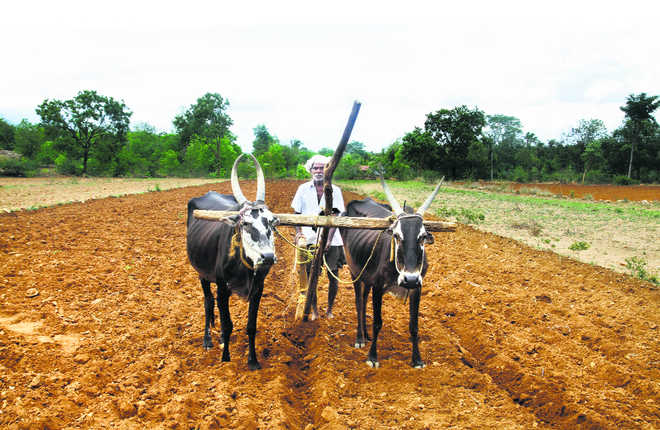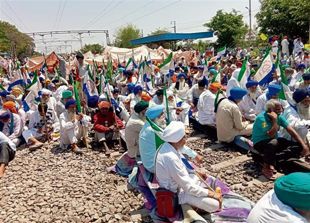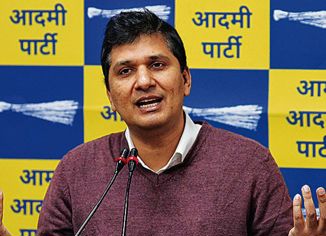
istock
FINALLY, the government has admitted in Parliament that it is not possible to double farm income by 2022. Replying to a question by Samajwadi Party leader Ram Gopal Yadav in the Rajya Sabha, Minister of State for Agriculture Parshottam Rupala said: “We agree that it is not possible to double farm income with the current growth rate in the agriculture sector.”
The growth rate in agriculture is hovering around less than 4 per cent annually. The Dalwai Committee on Doubling Farmers’ Income (DFI), set up in April 2016, had projected a farmer income growth rate of 10.4 per cent to achieve this, and many economists say this would require a very high economic growth rate. I am glad the minister has finally put a lid on a promise that wasn’t so easily workable. He agrees to follow other approaches, including enhancing non-farm income.
This should hopefully end the series of seminars, conferences and workshops on DFI that are being held in universities and colleges and by civil society organisations for over two years now, knowing very well that it wasn’t possible to do so. At a time when real growth in farm income had remained ‘near zero’ in the past two years, and prior to that the Niti Aayog had estimated real farm income to be growing at less than half a per cent every year during the five-year period (2011-12 to 2015-16), not many talked of the radical structural transformation agriculture is crying for. Instead, the emphasis remained on upgrade and refinement of available approaches by focusing on schemes like soil health cards, neem-coated urea, Fasal Bima Yojana, National Agricultural Markets (e-NAM), more crop per drop etc., which are important but surely not enough to double farm income. What is needed is direct income support, which is a better way of income augmentation.
Although the government has set up an Empowered Committee for the implementation and monitoring of the recommendation of the DFI Committee report, submitted in September 2018, the acknowledgement that doubling farmers’ income in the next two years is not possible will certainly help in initiating long-term reforms that the sector is in dire need of, and where the focus needs to shift to. The first and foremost is the need to boost public sector investment in agriculture. The continuing bias against agriculture becomes apparent when one looks at the Reserve Bank of India statistics, which tell us that the public sector investment in agriculture remained close to 0.4 per cent of the GDP between 2011-12 and 2016-17. Considering that nearly half the population is dependent on agriculture, this speaks volumes of the deliberate neglect of farming.
I don’t think any economist can vouch for a miracle in agriculture without adequate investments flowing in. Not even half a per cent of the GDP is being invested in agriculture year after year, primarily because the dominant economic thinking does not consider agriculture to be an economic activity. The entire effort has been to move people out of agriculture rather than to focus on making farming a viable and sustainable enterprise. This has to change, and an indication to this came from the BJP manifesto which promised an investment of Rs 25 lakh crore in agriculture. But the Budget 2019-20 makes a provision for Rs 1,30,485 crore for agriculture, including Rs 75,000 crore allocated for the remaining three instalments of the PM-Kisan scheme. Besides direct income support, the agricultural market infrastructure (including warehouses and godowns) needs appropriate budgetary allocations along with investments for link roads connecting villages with new upcoming APMC (Agricultural Produce Market Committee) mandis.
Interestingly, while agricultural scientists and economists normally shy away from spelling out the radical reforms agriculture needs for enhancing real farm income as well as to restore the lost pride in farming, the Punjab and Haryana High Court has in a recent judgment said the minimum support price (MSP) for agriculture should be three times the cost of production to save farmers from distress. “Though the MSP is being announced since 1965, the stark reality is that it has not boosted the income of farmers to bring them out of abject poverty. Time has come when the MSP be given legal force by granting legal rights to the farmers to get fair value for their crops.” The direction to provide legal status to the MSP by bringing in an appropriate legislation came from a Division Bench of Justice Rajiv Sharma and Justice HS Sidhu, which also spelt out a series of reform measures, including removing middlemen, setting up warehouses, weather-based crop insurance, using Internet technology, debt servicing etc. that agriculture requires.
Earlier, the Commission for Agricultural Costs and Prices (CACP) had called for making the MSP a legal entitlement. It had highlighted how farmers in remote parts don’t have access to regulated APMC markets and they have to sell their produce in the local haats much below the MSP. In the past two years, farmers had reportedly sold pulses, oilseeds and coarse cereals at prices 20 to 30 per cent lower. Even in the case of wheat and rice, the two crops that are procured, farmers are unable to realise the minimum price except at places where a robust procurement system prevails. Low prices of wheat and paddy in Bihar force unscrupulous traders to transport the produce to Punjab and Haryana to get a higher MSP.
Making the MSP a legal instrument not only instils confidence among farmers, but will also assure them minimum price, thereby enhancing farm income, reducing debt, and minimising farm distress. Raising the MSP to thrice the average weighted cost of production, including imputed rent and interest on owned land and capital, is a very valid recommendation. It is doable, and my suggestion is to have two price bands — one at which the procurement is made at the MSP, and the second be the actual price that the farmer has to be paid. As all farmers are now linked with Jan Dhan bank accounts, the gap between the two bands can be transferred to the farmer’s bank account.
Such a delivery system will ensure that food inflation remains in control, and at the same time farmers get the legitimate price they are entitled to but have been deprived of. Of the Rs 25 lakh crore investment promised in the BJP manifesto, even if Rs 5 lakh crore is disbursed as enhanced price to farmers routed through the PM-Kisan scheme, the face of Indian agriculture will change forever, for the better.
The time has come to emerge out of the obsession with growth figures in agriculture. It is time to invest in human resource, the biggest strength of Indian agriculture. With more investments in raising real farm income, more of farmers’money will automatically be invested in improving farm techniques. Higher the farm income, higher will be the rural demand generated, speeding up the wheels of industrial development. At a time when the country is witnessing a slowdown, creating more demand is the biggest challenge, which can only come from agriculture. Investing in agriculture is the surest way to bail out the economy. This is the way to Sabka Saath, Sabka Vikas.
The author is a food and agriculture specialist
Dalwai panel recommendations on doubling farmers’ income
- It is time to recognise agriculture in India as an enterprise, that should be based on the principles of profit. Despite India ranking second in agricultural production globally, overtaking countries such as the US, Russia and Brazil, the farmers are yet to realise sustainable profits, as seen from low average monthly income of the families. However, practising agriculture as an enterprise will call for optimal scales of operations at all stages of the agricultural value system, which currently is challenged by structural weaknesses as manifest in atomisation of India’s large arable geography into small and marginal farms. The answer to this lies in adopting all legal and organisational principles to enable pooling of land, mobilisation of farmers and aggregation of farmers’ produce.
- Redefine the mandate of agriculture so as to expand its horizon beyond the currently predominant deliverables — food and nutrition security. Agriculture should also be mandated to generate resources as raw material to feed and support industrial enterprises — chemicals, construction, energy, fibre, food, medicine etc.
- Recognise land and farm manpower as the two most potent assets of the farm family and enable full utilisation of both through enhancing cropping intensity and promoting secondary agriculture. Among the inputs, water may be treated as the ‘determining factor’ of production. Hence, highest priority may be assigned to water management.



























